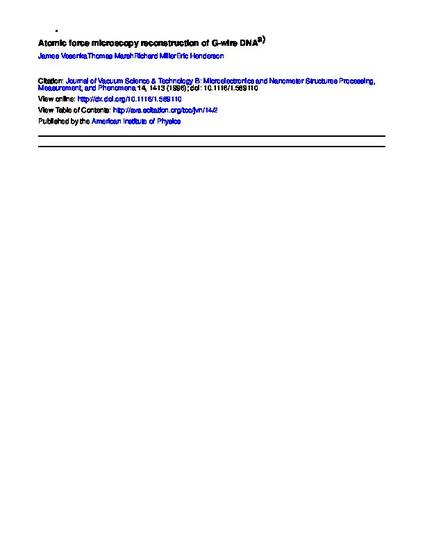
Article
Atomic force microscopy reconstruction of G‐wire DNA
Journal of Vacuum Science & Technology B
Document Type
Article
Disciplines
Publication Version
Published Version
Publication Date
1-1-1996
DOI
10.1116/1.589110
Abstract
A fundamental problem in atomic force microscopy (AFM) image interpretation is distinguishing features arising from tip geometry from true molecular detail. In this study, a novel 4‐stranded form of DNA (the ‘‘G wire’’) was coadsorbed with 7.6‐nm‐diam colloidal gold probe calibration standards and examined by AFM. After the probe apices were reconstructed from AFM images of the standards, the artificial broadening of the coadsorbed G‐wire DNA was removed, resulting in more reliable image interpretation. Using simple geometric models, a favorable comparison between observed and modeled G‐wire cross sections suggests that reconstructions removed about 25% of the tip‐broadened AFMimage in these studies.
Copyright Owner
American Vacuum Society
Copyright Date
1996
Language
en
File Format
application/pdf
Citation Information
James Vesenka, Thomas Marsh, Richard Miller and Eric Henderson. "Atomic force microscopy reconstruction of G‐wire DNA" Journal of Vacuum Science & Technology B Vol. 14 Iss. 2 (1996) p. 1413 - 1417 Available at: http://works.bepress.com/eric-henderson/18/

This article is from Journal of Vacuum Science & Technology B 14 (1996): 1413, doi: 10.1116/1.589110. Posted with permission.